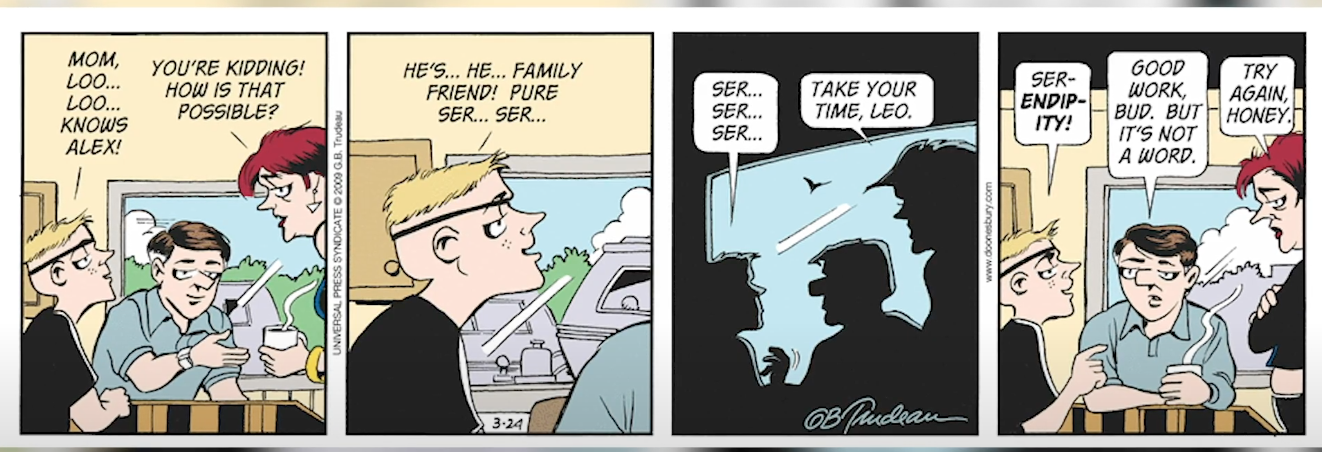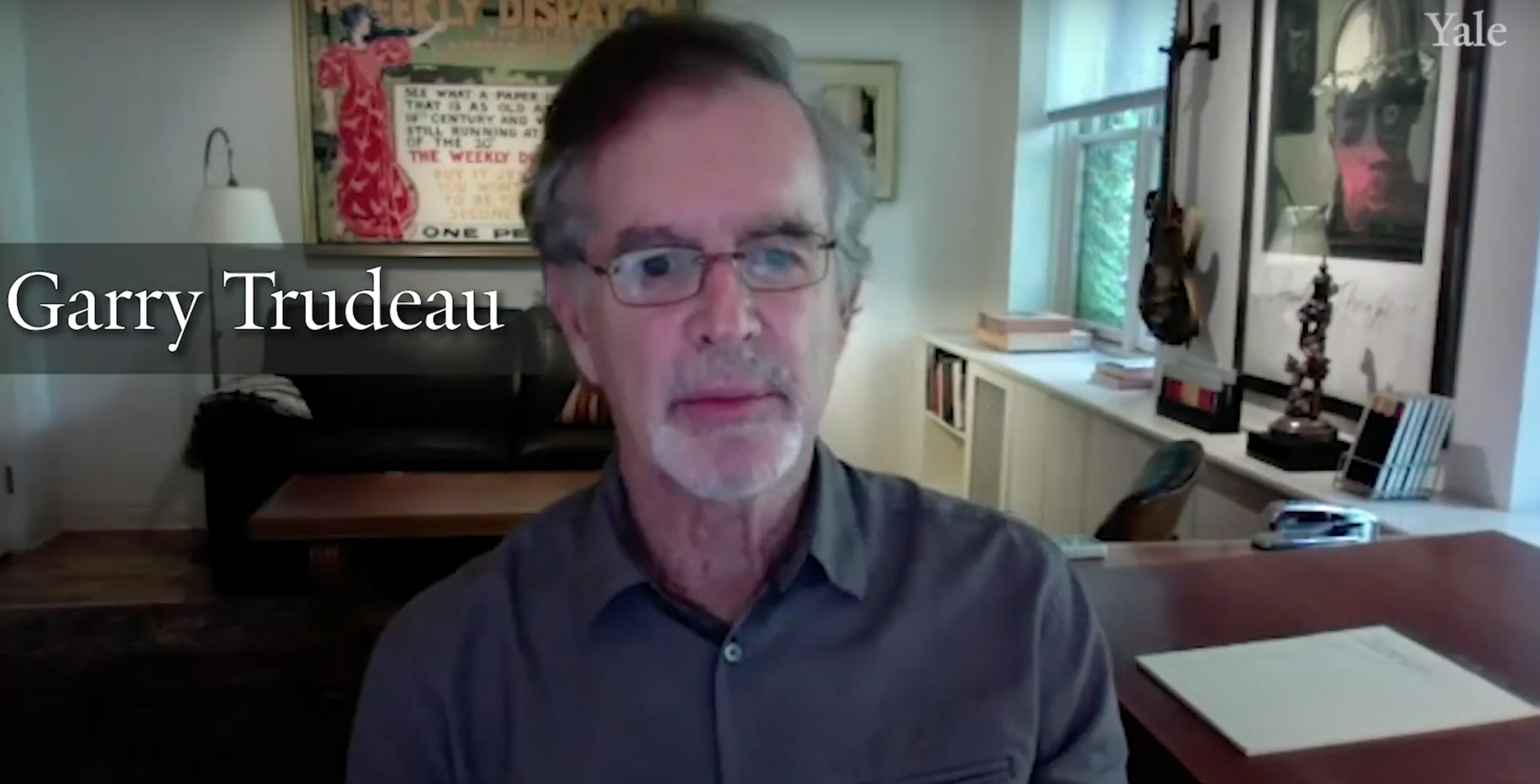In response to our invitation to describe the work he is currently pursuing, Garry Trudeau—cartoonist, writer, and creator of “Doonesbury”—described the challenges of creating a “Complete Digital Doonesbury” featuring some 15,000 comic strips in honor of the 50th anniversary of the beloved strip. In the process, Garry’s editor David Stanford identified what he called a “perfect strip” published in 2009. Here, Garry “deconstructs” this piece, walking us through its creation, frame by frame. Garry shares details of his broader creative practice, thoughts about writing comedy, and the development of his unique and groundbreaking approach to the comic strip format.
Garry describes how his comedy stems from a desire to emulate life-like dialogue: “We don’t tell jokes to each other in real life, but we say things that are very funny. Sometimes intentionally, sometimes not. So that’s what I’m trying to capture.”

Image: the “perfect strip” identified by David Stanford, published in 2009.
MORE ON GARRY TRUDEAU
Garry Trudeau was born in New York City in 1948, and was raised in Saranac Lake, New York. He received a B.A. and M.F.A. in graphic design from Yale University. In 1970, he launched the comic strip Doonesbury, which (as of 2007) appears in over one thousand newspapers worldwide. His work has also appeared in the form of books, films, and theater musicals.
FIND & FOLLOW Doonesbury on Twitter @DoonesburyComic
READ more Doonesbury online at the Washington Post.
IN BEINECKE COLLECTIONS
Garry Trudeau’s papers find their home at the Beinecke Library. The papers, spanning from 1967 to 2017, contain notebooks, research, correspondence, business papers, and artwork related to Doonesbury. The papers also contain materials related to Garry Trudeau’s work in theater and screen productions, journalism, fan letters, merchandise, and awards. Explore the collection here.
Trudeau’s work has also been featured in Beinecke exhibitions, such as The Power of Pictures, the final exhibition of the Beinecke’s 50th anniversary celebration in 2013. One of Trudeau’s notebooks was spotlighted as part of the exhibit’s “Pictures of Record” section, which documented how people have used images to share experiences, record events, and engage in protest and social criticism. The notebook was exhibited alongside a set of 1847 daguerreotypes from the Mexican war—the earliest known photographs of warfare—and the Romanov family albums.
- Gabrielle Colangelo, Y’21
Yale Collection of American Literature Student Research Assistant
